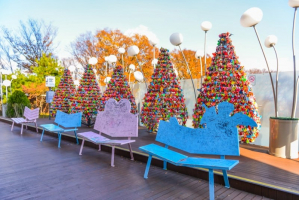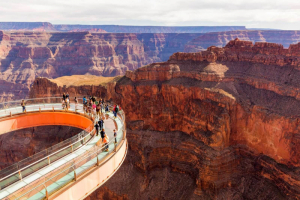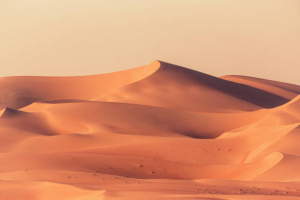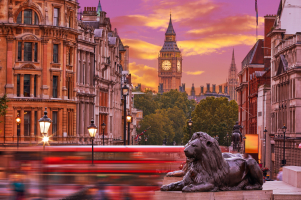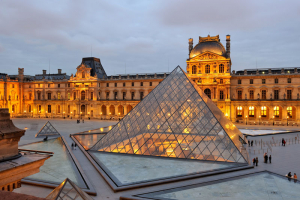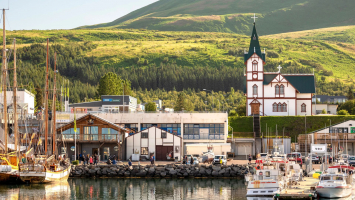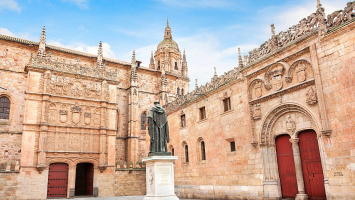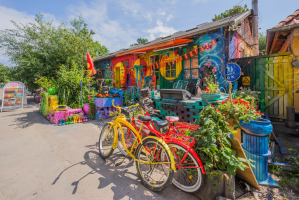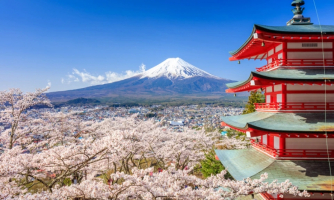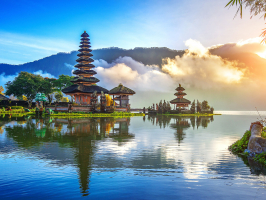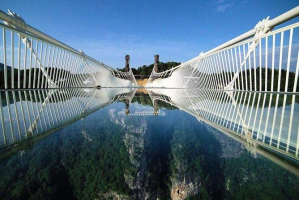Top 10 Incredible Forests Around The World
From California's massive redwoods to Japan's towering bamboo groves, the world is filled with stunningly magnificent forests that everyone should put on their ... read more...bucket list. Whether the forest is little or huge, amazing beauty may be contained in just a few particular trees. Spending time in nature has a way of making you feel whole. Now, let's take a look at the most amazing forests around the world.
-
The Amazon Rainforest, also known as Amazonia or the Amazon Jungle, is a wet broadleaf forest that encompasses the majority of South America's Amazon Basin. More than half of the forest is in Brazil, with the remainder in Peru, Colombia, Venezuela, Ecuador, Bolivia, Guyana, Suriname, and French Guiana, totaling 5.5 million square kilometers (1.4 billion acres). The Amazon rainforest contains more than half of the world's surviving rainforests and is the world's biggest and most diverse tract of tropical rainforest. The plant species variety is the greatest on the planet. The Amazon Rainforest is home to one out of every 10 recognized species on the planet.
The piranha, gigantic anteater, enormous armadillo, jaguar, anaconda, and Amazonian dolphins and manatee are among the notable fauna found in the jungle. Boat down the Amazon River to observe numerous animals, enjoy the beautiful deep forests, and visit some of the local indigenous settlements for a complete, awe-inspiring experience.
The Amazon Rainforest is the world's richest and most diverse biological reserve, housing millions of species of insects, plants, birds, and other forms of life, many of which have yet to be discovered by science. The lush vegetation includes several varieties of myrtle, laurel, palm, and acacia trees, as well as rosewood, Brazil nut, and rubber tree. The mahogany and Amazonian cedar provide excellent wood. Major fauna includes jaguars, manatees, tapirs, red deer, capybaras, and a variety of rodents and monkeys.
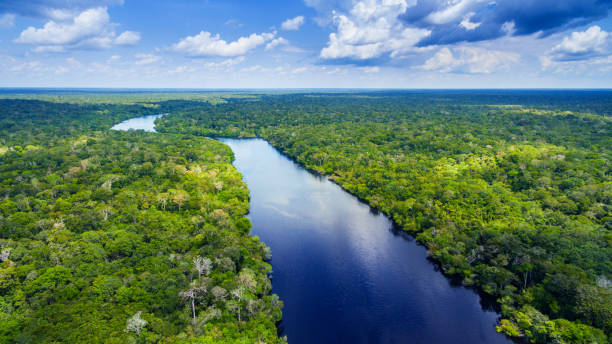
istockphoto 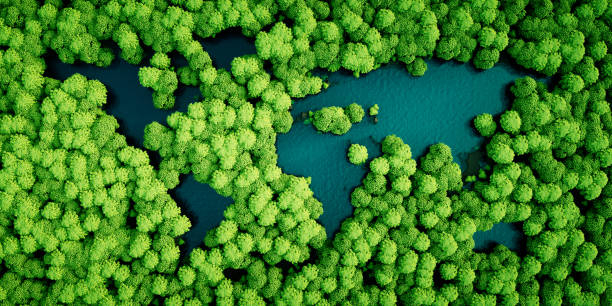
istockphoto -
The Daintree Rainforest in Far North Queensland is one of the world's most significant natural environments, spanning more than 1,200 square kilometers. Australia's Daintree Forest, a UNESCO World Heritage site, is one of the world's most spectacular and oldest rainforests, having been in continuous existence for the past 110 million years. This lush green jungle is one of the country's best-kept secrets. Trek to its heart to observe its rich species, including wallabies, kangaroos, platypuses, and the rare cassowary. You can even go crocodile spotting in the neighboring Daintree River or zip line through the jungle - it's a magnificent retreat for all animal and environment enthusiasts.
Despite the fact that majority of the forest is a national park, tourists will find plenty to see and do, as well as nice housing. The spectacular splendor of the rainforest is never far away, no matter where travelers choose to stay. In the Daintree, bushwalking is a popular activity. There are several kilometers of hiking trails that travel through some of the world's densest and most pure natural woods. Visitors will undoubtedly witness uncommon species such as tree kangaroos, swamp wallabies, kingfishers, tree snakes, and, of course, the jewel-like cassowary. It is recommended that guests explore the walking paths on organized trips. There are half-day, full-day, and multi-hour treks available.
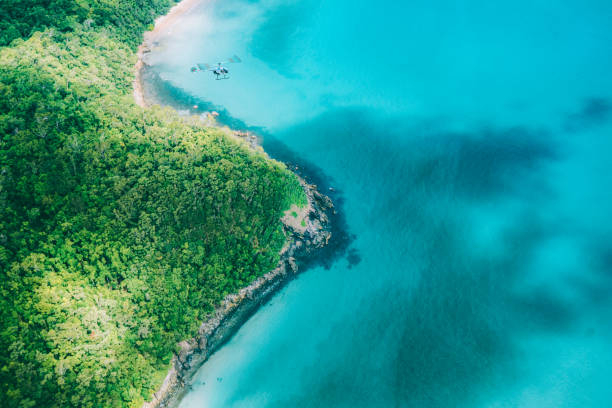
istockphoto 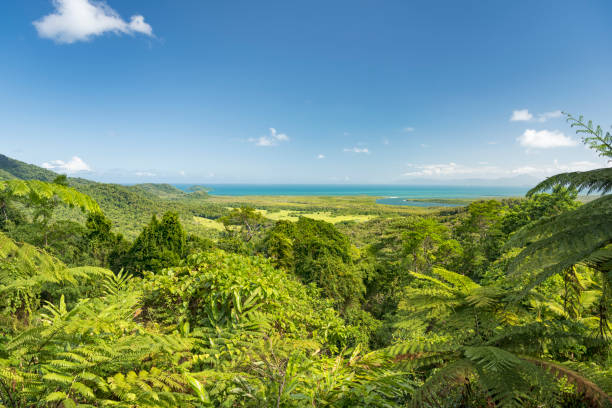
istockphoto -
The cloud forest is best experienced in Monteverde. Cloud woods got their name from the thin veil of clouds that may be seen just below the canopy. The clouds disperse into water on the leaves and trickle down, soaking the plants below. The view from above is spectacular. The Monteverde Reserve, Santa Elena Reserve, and Children's Eternal Rainforest are the three primary reserves that safeguard the sustainability of the cloud forest covered mountains in this section of Costa Rica. A quarter-million people from all over the world visit these biodiverse highlands.
There are 755 tree species in total, which indicates that one square mile of The Monteverde Cloud Forest might contain more tree species than the whole United States of America. Visit Monteverde to learn about Costa Rica's outstanding biodiversity and environmental protection. The gloomy, enigmatic cloud woods are the nicest part of Monteverde. You won't find such gorgeous environment anyplace else due to the humid atmosphere. Hike with a guide to increase your chances of seeing wildlife and seeing the magnificent cloud forest up close. You may learn everything there is to know about the natural environment and rainforest vegetation. For the greatest experience, bring rain clothing, hiking boots, and binoculars.
See a whole new world of nature with a guide who will show you all the intriguing species that appear at night. You'll stroll in small groups with trained guides who know just where to look for wildlife. Among the creatures and insects you may see are sleeping birds, sloths, snakes, monkeys, and tarantulas.
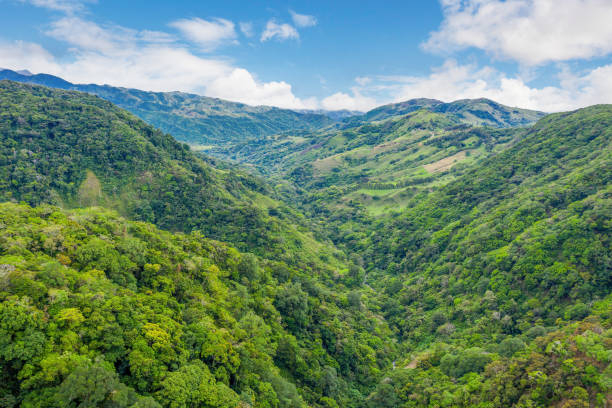
istockphoto 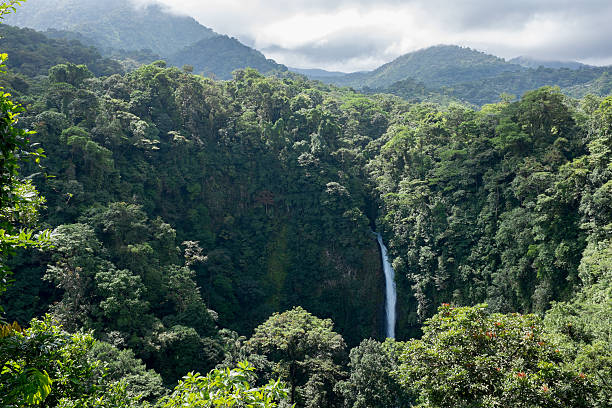
istockphoto -
The Arashiyama Bamboo Grove is one of Japan's most popular tourist destinations. You will walk down a route encircled on all sides by thousands of rising bamboo stalks. They appear to expand indefinitely into the air in all directions, while the sunshine seeps in from above, offering a spectacular view. Visit the forest from October to November or April to May for the most ambient and mystical experience, running from the Tenry-ji temple to the kchi Sans house.
The journey through the Arashiyama bamboo forest is short yet immersive, located in the town of Sagano on the city's west side. The light dappling on the woodland floor has a beautiful quality to it. Approach the grove via the Tenryu-ji Temple's side entrance for the best effect. You should also pay a visit to Okochi-Sanso Villa at the top of the grove. With exquisite grounds and some of the greatest views of Kyoto, the house is an excellent option to visiting one of the Imperial homes. It is also typically devoid of crowds. Okochi-Sanso entrance includes a Japanese treat and hot matcha tea in the villa's teahouse.
An further stretch of the grove continues to adjacent Nonomiya Shrine, where Imperial family daughters used to cleanse themselves before becoming shrine maidens at Ise Jingu, Japan's most significant shrine. Nonomiya Shrine may be crowded with yukata-clad young women seeking a love match, while thick-calved rickshaw drivers halt to offer a little of history to their passengers.
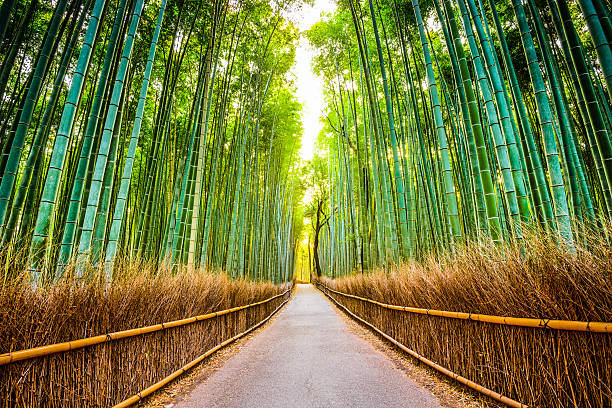
istockphoto 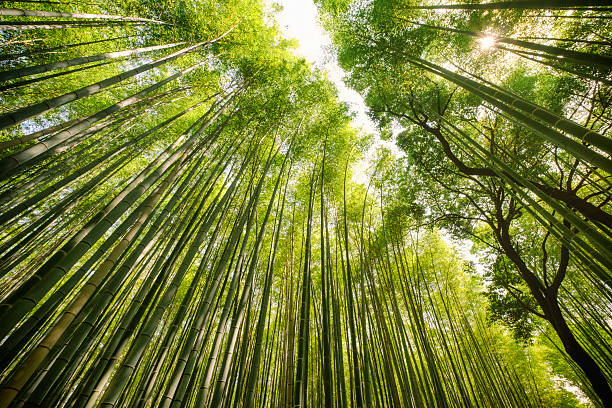
istockphoto -
A clump of 400 trees in Poland's Krzywy Las, or "Crooked Forest", are curiously twisted, combining science fiction with ecological aberration. The trees curve out at 90 degrees, forming a weird J-shape with a potbelly floating just above the ground. The trees are likewise well-kept, with all of their bends facing northward. Nobody knows how the trees got their unusual shape and structure, and the theories about them range from plausible to fantastic. The most compelling genesis idea is that the trees were buried by heavy snow while they were young. Others, however, feel that the gravitational force of the location affected the trunks.
According to one theory, the trees were sculpted by foresters after they were planted in 1925-1928. They apparently planned to make furniture out of bent forms and bent the trees when they were 10 years old. The foresters severely limited the trees' development by denying them vertical growth. The trees were most likely abandoned after WWII began in 1939, leaving a lasting ecological effect for decades to come.
Despite whatever previous causes warped them, every single tree in the Crooked Forest has the same hook-shaped bent and lofty stature. The trees continued to thrive, relying on the one branch that remained to perform the function of the other missing branches in order to survive. Whatever happened, it had to have happened to every single tree, because they all had the same deformed characteristics. Because of the area's abandonment by residents during WWII, the world may never know how the trees came to be this way.
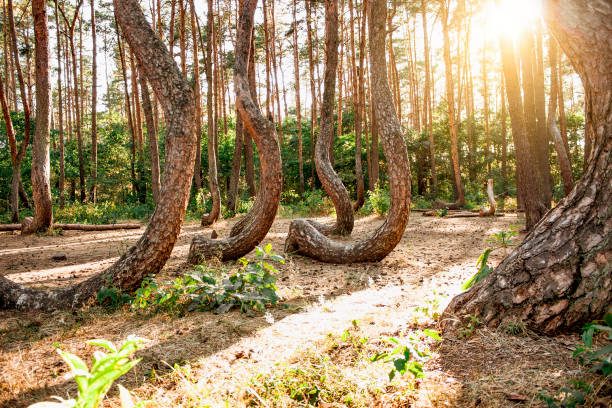
istockphoto 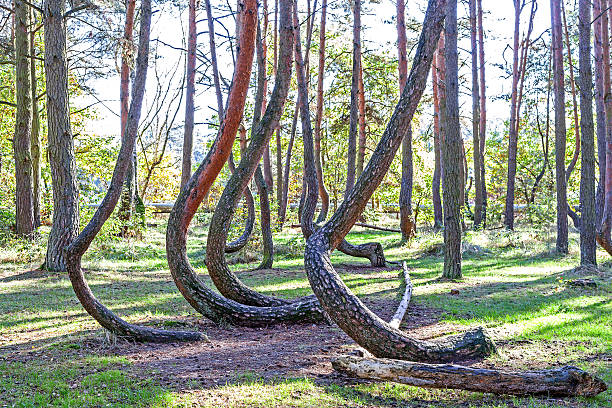
istockphoto -
Redwood National Park is a section of coastal mountains north of San Francisco that border the Pacific Ocean. It is covered with a spectacular forest of coastal redwood trees, the world's tallest and most stunning trees. The marine and terrestrial fauna are equally impressive, especially the sea lions, bald eagles, and endangered California brown pelicans.
The coastal redwood forest is the park's main feature, a surviving relic of a collection of trees that has existed for 160 million years and was formerly spread throughout many of the world's moist temperate zones but is now isolated to the wet sections of North America's west coast. The parks have some of the world's tallest and oldest trees. The two unique physiographic settings of coastline and coastal mountains, which comprise old growth forest and stream ecosystems, have rich intertidal, marine, and freshwater stream flora and fauna.
The Redwood National and State Parks are located along the Pacific Ocean's coast. It is covered with a spectacular forest of Coast Redwoods (Sequoia sempervirens), the world's tallest living object and one of the most stunning trees. Several of the world's tallest trees may be found on the site. Redwood National & State Parks protect the world's biggest surviving contiguous old coast redwood forest in its natural woodland and streamside settings.
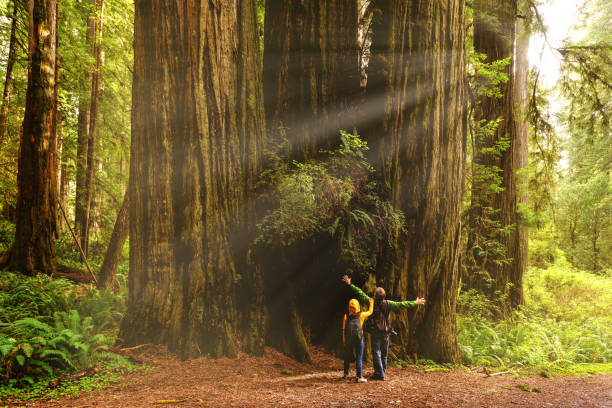
istockphoto 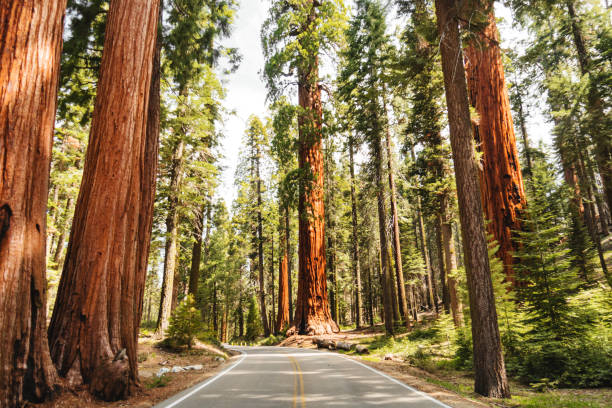
istockphoto -
The Borneo Rainforest is one of the world's remaining significant biodiversity hotspots. With nearly 400,000 square kilometers (154,440 square miles) of rainforest shared between Indonesia, Malaysia, and Brunei on the world's third biggest island, the number of distinct species of plants, trees, animals, reptiles, insects, and birds is enormous. This old rainforest ecosystem may be ancient, but with a human population that exceeds 20 million people and rising global strain on Borneo's untapped resources, this wild, secluded island is threatened by deforestation, poaching, and habitat degradation.
Borneo is most famous for being the home of the Orangutan. These huge, intelligent ginger apes are genetically comparable to humans, despite spending much of their time in the trees making nests. There are also Gibbons, Macaques, Langurs, and the small, wide-eyed, nocturnal Tarsier, as well as the long-nosed Proboscis Monkey. The flora is as diverse as the wildlife, and the Borneo rainforest is home to some of the world's tallest tropical trees. There are at least 3,000 tree species, however the Big Five Flora of Borneo may pique your curiosity. These are five massive Borneo plants, including the notorious Rafflesia, that can produce the biggest blossoms ever recorded.
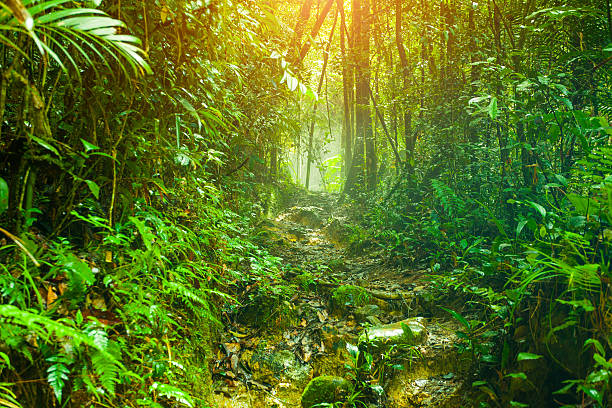
istockphoto 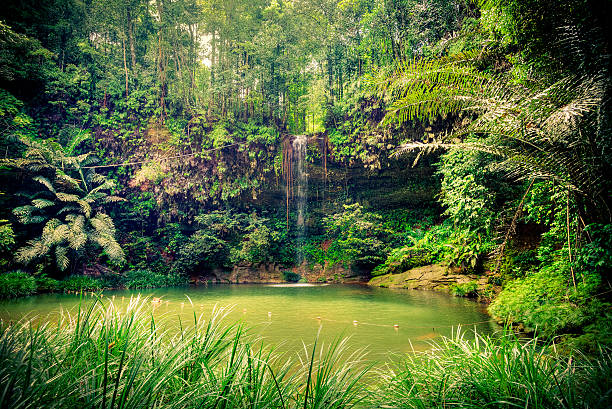
istockphoto -
Hallerbos is a one-of-a-kind woodland in Belgium. It is well-known for its stunning bluebell blooms that bloom in the spring on the woodland floor. The forest comprises around 1,360 acres and is located in the municipality of Halle, which is in Flemish Brabant, with a tiny portion in Walloon Brabant. The woodland is a famous tourist destination that can be reached by both public and private transportation. Hallerbos was part of a large carboniferous woodland at the start of the Mesolithic era. However, it has shrunk significantly in size over the years.
The Hallerbos Forest attracts both local and foreign visitors, and there are several cafés and restaurants nearby. Other notable locations include the Roebuck Trek, a difficult walk across four valleys, and the Bluebell Walk, which begins in Achtdreven on the middle plateau and travels through the entire bluebell region. The overall size of the forest reserve is around 100 hectares. Rare flora such as Bear's Garlic, Spiked Rampion, Herb-Paris, and heather flourish inside it. There are also many different types of flowers that attract butterflies such as the Rare Purple Emperor, White-letter Hairstreak, and Brown Hairstreak. Hallerbos now includes 10 ponds with fish, and on summer evenings, one may see bats foraging in the water area. This place is also ideal for bird watching as in the autumn season one can find many water birds around ponds.
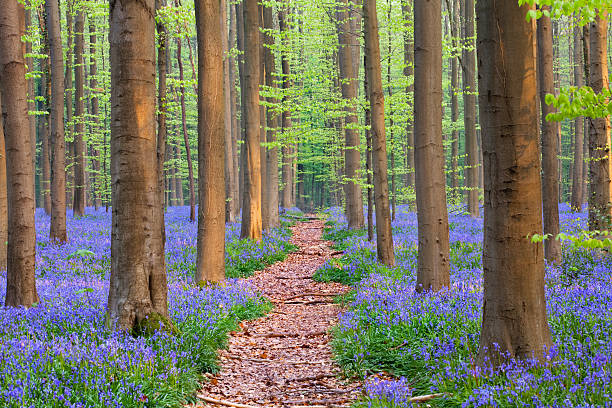
istockphoto 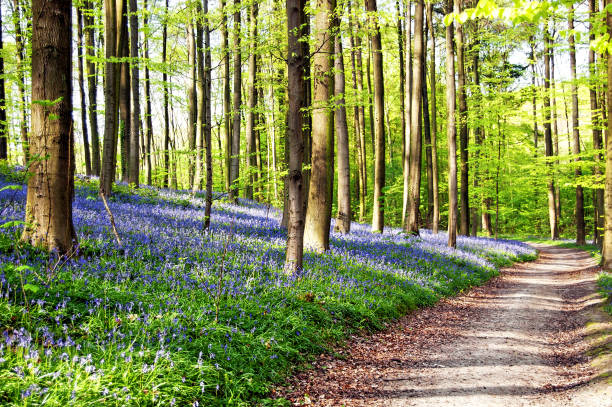
istockphoto -
The Great Bear Rainforest is a 6.4-million-acre temperate rain forest on the Pacific coast of British Columbia, Canada. It is part of the wider Pacific temperate rainforest ecoregion, which includes the world's biggest coastal temperate rainforest. The Government of British Columbia formally designated the Great Bear Rainforest in February 2016, when it announced an agreement to permanently conserve 85% of the old-growth wooded region from industrial logging. In September of that year, the woodland was included to the Queen's Commonwealth Canopy.
The Great Bear Rainforest is one of the world's greatest surviving expanses of unspoilt temperate rainforest. Cougars, wolves, salmon, grizzly bears, and the Kermode ("spirit") bear, a rare subspecies of black bear in which one in every ten cubs has a recessive white coat, live in the region. The woodland has 1,000-year-old western red cedar and Sitka spruce towering over 90 meters. Coastal temperate rainforests are distinguished by their closeness to both the sea and the mountains. When the atmospheric flow of moist air off the ocean collides with mountain ranges, abundant rainfall occurs. This climatic pattern is shared by much of North America's Pacific coastline, including parts of Alaska, British Columbia, Washington, Oregon, and Northern California.
Canada’s Great Bear Rainforest is a large stretch of coastal temperate rainforest with massive old trees, such as the red cedar, western hemlock, Sitka spruce, and the amabilis fir. Apart from these impressive trees, it’s also the dwelling of hundreds of animal species, such as cougars, grey wolves, Sitka deers, and mountain goats. It’s best to go from late August to mid-October, as thousands of salmon go back to the local rivers, enticing other wildlife such as grizzly bears and the rare cream-colored Kermode bear. Afterward, enjoy the pristine wilderness that’s right before your eyes.
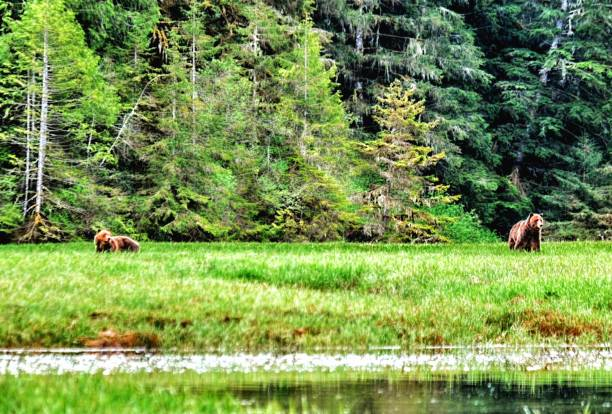
istockphoto 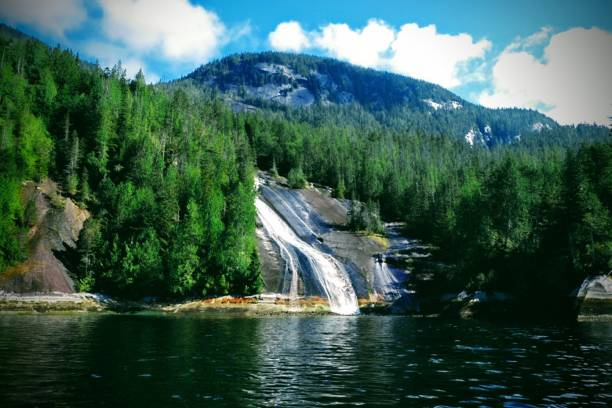
istockphoto -
The Black Forest, located in southwest Germany, is the home of the famous German cuckoo clock and the location for the Grimm Brothers' fairy tales. It got its name from the dark tint that many of the pine trees in the region emanate. Historically known for mining metal resources and forestry, it is today a popular tourist destination filled with picturesque lakes, rivers, hills, valleys, and evergreen canopies. The Feldberg, at 1,493 metres (4,898 feet) above sea level, is its highest point.
Every year, thousands of traveler's flocks to the Black Forest area in southwest Germany. It may be on a tour bus, with stops to see the world's largest cuckoo clock or enjoy a slice of the famed Black Forest cake. Visitors may be drawn in by the outdoor activities, such as hiking the paths that crisscross the Black Forest area or skiing and snowshoeing in the winter months. It might just be the allure of a tiny town in an area like the Kinzig valley or along the Rhine River near the Swiss border. Somewhere where true Black Forest living may still be experienced with local traditions. Historically, the region was known for forestry and metal deposit mining, but tourism has now become the dominant business, employing around 300,000 people. Several destroyed military fortifications from the 17th century may be found.
Black Forest Germany allows visitors to explore some of the sights and activities that may assist them decide on a trip to this section of southern Germany. Visitors looking to stay in the Black Forest area have a choice between larger towns and cities on the outskirts of the region with plenty to do and good access to the sights and activities or smaller towns and villages in the heart of the Black Forest with access to the sights and activities from the doorstep. Freiburg am Breisgau, located on the western side of the Black Forest, is a wonderful option for people looking for a livelier atmosphere. It is a youthful city with a lot going on, but it also has excellent access to the southern Black Forest. Keeping on the western side, the spa town of Baden-Baden, which is close to the Black Forest National Park, is another nice alternative.
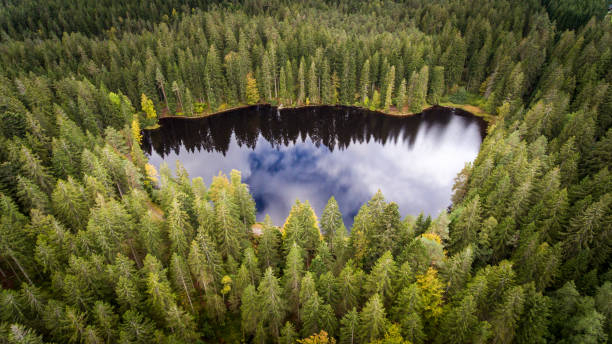
istockphoto 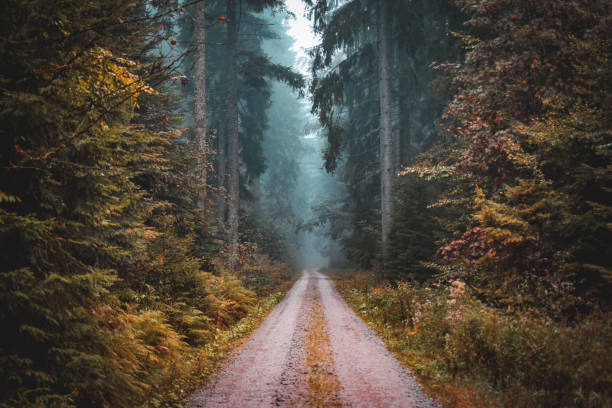
istockphoto












